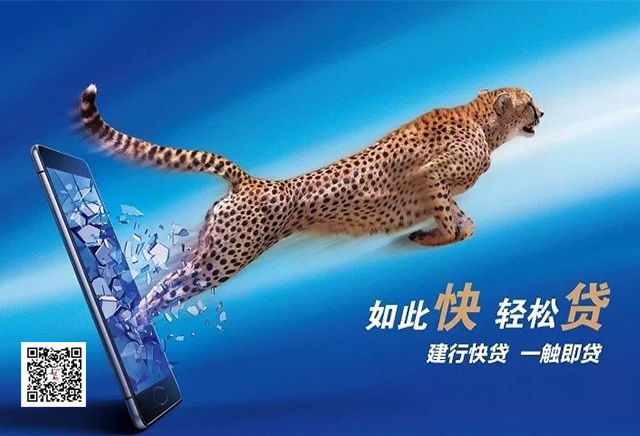
在旧金山三藩市俱乐部(SFTTC)的球台前,一位身形略显佝偻却精神矍铄的老者正握着球拍示范动作。他手腕轻旋间,白球如流星般划过球网,旋转方向诡谲难辨,围观的学员无不屏息凝神。这位89岁的老者便是韦恪仪,一个历经国共内战、文化大革命洗礼,在化学、计算机与乒乓球领域均书写传奇,用一生践行“取之社会,用于社会”誓言的行者。
At the table of San Francisco Table Tennis Club (SFTTC) in San Francisco, a slightly hunched but energetic elderly man holds a paddle to demonstrate strokes. With a gentle twist of his wrist, the white ball streaks across the net like a shooting star, its spin elusive and unpredictable, leaving onlookers breathless with attention. This 89-year-old is Lewis Loyi Wei, a visionary who endured the Chinese Civil War and the Cultural Revolution, forged legends in chemistry, computer science, and table tennis, and spent his life upholding the oath "Take from society, give back to society."
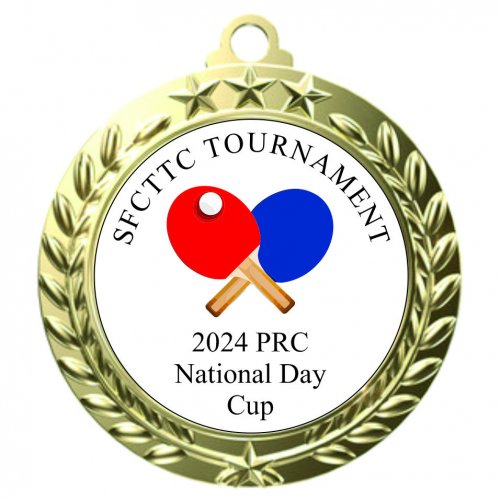
烽火少年时:德智体的萌芽与坚守
Youth Amidst Flames: The Germination and Persistence of Morality, Intelligence, and Physical Fitness
1936年降生的韦恪仪,童年与少年时代始终在时代的洪流中颠簸。国共内战的炮火、社会秩序的动荡,让他过早地体会到生活的艰辛与世事的无常。但这段特殊的经历并未消磨他的意志,反而在他心中埋下了“实事求是”的种子——唯有脚踏实地,方能在变局中立足;唯有全面发展,方能应对未知的挑战。
Born in 1936, Lewis Wei's childhood and adolescence were tossed about in the tides of the times. The gunfire of the Chinese Civil War and the turmoil of social order made him experience the hardships of life and the unpredictability of the world at an early age. Yet this extraordinary experience did not diminish his will; instead, it planted the seed of "seeking truth from facts" in his heart—only by being down-to-earth can one stand firm in changes; only through all-round development can one meet unknown challenges.
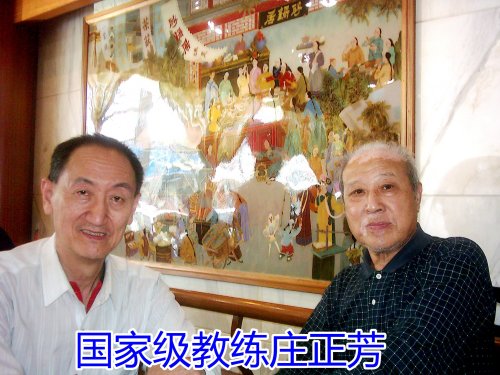
1950年代,韦恪仪凭借优异的成绩考入南开大学化学系,开启了他“德智体全面发展”的实践之路。在课堂上,他是潜心钻研的优等生,烧瓶与试剂在他手中仿佛有了生命,精准的实验数据见证着他对科学的敬畏。课堂之外,他的身影活跃在校园的各个角落:作为化学系学生会副主席,他悉心协调学生活动,搭建起师生沟通的桥梁;身为班总干事,他事无巨细地处理班级事务,赢得了同学的信赖;更兼任全校行政部门生产劳动管理工作,在改建校园和勤工俭学中锤炼着实干精神。
In the 1950s, Lewis Wei was admitted to the Department of Chemistry at Nankai University with outstanding grades, embarking on his journey of practicing "all-round development of morality, intelligence, and physical fitness." In class, he was a dedicated top student—flasks and reagents seemed to come alive in his hands, and precise experimental data testified to his reverence for science. Outside the classroom, he was active across the campus: as Vice Chairman of the Chemistry Department Student Union, he carefully coordinated student activities, building a bridge between teachers and students; as class general secretary, he handled class affairs meticulously, gaining the trust of his classmates; he also took charge of production labor management in the university's administrative department. In the course of campus renovation and work-study activies, he tempered and strengthened a spirit of earnest diligence.
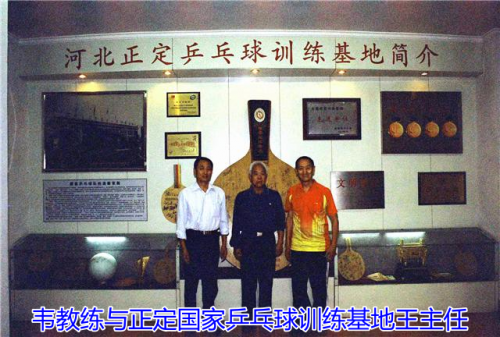
韦恪仪深知“体魄是立身之本”,从未放松对身体的锤炼。清晨的校园里,总能看到他晨跑的身影;排球场上,他跳跃扣杀的身姿成为一道亮丽的风景线。日复一日的坚持换来了丰硕的成果:他不仅斩获排球国家二级运动员称号,更在三公里竞走项目中达到国家三级运动员标准。这种对运动的执着,为他日后与乒乓球的深度羁绊埋下了伏笔。1960年,韦恪仪以优异成绩从南开大学毕业,怀揣着科研梦想,按第一志愿进入中国科学院河北省分院,开启了职业生涯的第一篇章。
Lewis Wei deeply understood that "physical fitness is the foundation of existence" and never neglected physical training. Early in the morning, his figure could always be seen jogging on campus; on the volleyball court, his leaping and spiking became a spectacular sight. Years of persistence bore rich fruits: he not only earned the title of National 2nd Rank volleyball player but also met the standard of National 3rd Rank athlete in the 3-kilometer race walk. This dedication to sports laid the groundwork for his future profound connection with table tennis. In 1960, Lewis Wei graduated from Nankai University with honors. With a dream of scientific research, he entered the Hebei Branch of the Chinese Academy of Sciences as his first choice, starting the first chapter of his career.
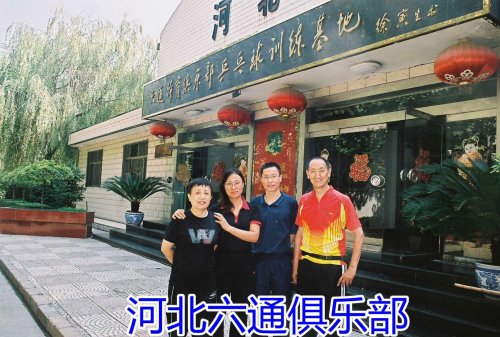
银球初结缘:从少年志趣到教练初心
First Encounter with the Silver Ball: From Youthful Interest to Coaching Aspiration
韦恪仪的乒乓人生,早在三岁半时便已悄然开启。在父亲、舅舅和阿姨的鼓励下,楼下大厅的墙壁成了他最初的“对手”,一块简陋的木板球拍陪伴他度过了无数童年时光。父亲作为技艺精湛的业余横拍球手,更是他乒乓路上的启蒙导师。每当夜幕降临,父亲总会放下忙碌的工作,手把手地教他横拍两面削球、反手发球与抽球等基础技术。在父亲的悉心指导下,反手攻球、发球与正反手两面削球逐渐融入他的血脉,成为他青少年时期鲜明的打球风格。
Lewis Wei's table tennis journey quietly began when he was just three and a half years old. Encouraged by his father, uncle, and aunt, the wall of the lobby became his first "opponent," and a simple wooden paddle accompanied him through countless childhood days. As a skilled amateur horizontal paddle player, Lewis’father was his earliest mentor in table tennis. Every nightfall, his father would put aside his busy work and teach him basic skills such as two-handed chop with the horizontal paddle, backhand serving, and smashing, hand in hand. Under his father's careful guidance, backhand attacking, serving, and two-handed chop with forehand and backhand gradually flowed into his veins, becoming the distinctive playing style of his youth.

1961年,韦恪仪正式参加工作,次年便开启了长达二十年的业余乒乓球、排球运动员兼乒乓球教练员生涯。这段岁月里,他既是驰骋赛场的运动员,也是传道授业的教练,在双重身份的切换中不断精进技艺。上世纪七十年代,一次特殊的经历成为他乒乓生涯的重要转折点——他受邀在北京少年宫协助国家级教练庄正芳训练少年专业队员。在这里,他得以近距离接触中国乒坛的前沿理念与顶尖技术,庄则栋的“加速制动”理论、梁戈亮对抗日本选手的“十五大板”攻守全能打法,尤其是徐寅生提出的“快、稳、准、狠”方针,如明灯般照亮了他的执教之路。
In 1961, Lewis Wei officially started working, and the following year, he embarked on a 20-year career as an amateur table tennis and volleyball player, as well as a table tennis coach. During these years, he was both an athlete competing on the field and a coach imparting knowledge, constantly refining his skills through the switch between the two roles. In the 1970s, a special experience became a crucial turning point in his table tennis career—he was invited to assist national coach Zhuang Zhengfang in training young professional players at the Beijing Children's Palace. Here, he gained close access to cutting-edge concepts and top-tier technologies in China's table tennis circle. Zhuang Zedong's "acceleration and braking" theory, Liang Geliang's all-round offensive and defensive style of "fifteen consecutive smashes" against Japanese players, and especially Xu Yinsheng's principle of "fast, stable, accurate, and fierce," illuminated his coaching path like beacons.

当时,徐寅生针对欧洲横板快攻结合弧圈球技术的兴起,正积极倡导乒乓技术的革新,强调“快、准、狠、变”的辩证统一。韦恪仪通过反复观摩梁戈亮攻守自如的实战表现,深入研读徐寅生关于“快”与“稳”辩证关系的论述,深刻认识到自己“反手攻球兼两面削球”风格的局限性。他决心突破自我,苦练正手攻球技术,最终完成了打法的重大转型——形成“正反手攻球兼削球”的全新风格,兼顾进攻的锐利与防守的稳固。
At that time, in response to the rise of European horizontal paddle fast attack combined with loop ball technology, Xu Yinsheng was actively advocating the innovation of table tennis technology, emphasizing the dialectical unity of "fast, accurate, fierce, and flexible." By repeatedly observing Liang Geliang's free offensive and defensive performances in actual competitions and in-depth study of Xu Yinsheng's discussions on the dialectical relationship between "fast" and "stable," Lewis Wei deeply recognized the limitations of his own style of "backhand attacking combined with two-handed chop." He was determined to break through himself, intensively practiced forehand attacking technology, and finally completed a major transformation of his playing style—forming a new style of "forehand and backhand attacking combined with chopping," which balanced the sharpness of offense and the stability of defense.

1982年底,韦恪仪代表石家庄市河北师大附中参赛,在河北省石家庄市文教系统乒乓团体公开赛中,他凭借革新后的打法,力克所有拥有国家二级运动员称号的对手,助力团队夺得第二名,自己也成功达到国家二级运动员标准。这一刻,既是对他多年苦练的最好回报,也坚定了他将乒乓事业发扬光大的决心。
At the end of 1982,Lewis Wei represented Hebei Normal University Affiliated High School in Shijiazhuang in the Table Tennis Team Open Tournament of the cultural and educational system in Shijiazhuang, Hebei Province. With his innovated playing style, he defeated all opponents with the title of National 2nd Rank Athlete, helping the team win the second place and successfully meeting the standard of National 2nd Rank Athlete himself. This moment was not only the best reward for his years of hard training but also strengthened his determination to carry forward the cause of table tennis.

跨界再转型:从乒乓教练到计算机名师
Cross-Border Transformation Again: From Table Tennis Coach to Computer Expert
1983年,年近半百的韦恪仪做出了一个惊人的决定——移民美国加州旧金山。这个决定意味着他要告别深耕二十年的乒乓与排球教练岗位,告别熟悉的故土,在异国他乡开启全新的人生征程。初到旧金山,韦教练敏锐地察觉到计算机科技业正迎来爆发式增长,“硅谷的光芒照亮了整个城市,我意识到这是一个不容错过的时代机遇”。抱着“活到老,学到老”的信念,他毅然踏上了跨界之路,考入三藩市市立大学专修电脑程序课程,其中就包括刚刚问世的动画绘图程序课。
In 1983, nearly 50 years old, Lewis Wei made a surprising decision—to immigrate to San Francisco, California, USA. This decision meant he had to bid farewell to his 20-year career as a table tennis and volleyball coach, leave his familiar hometown, and embark on a new life journey in a foreign land. Shortly after arriving in San Francisco,Coach Wei keenly sensed that the computer technology industry was experiencing explosive growth. "The light of Silicon Valley illuminated the entire city, and I realized this was an era opportunity not to be missed." Holding the belief of "never too old to learn," he resolutely embarked on a cross-border path, enrolling in City College of San Francisco to specialize in computer programming courses, including the newly launched animation and graphics programming course.

对于一位化学专业出身、年近五十的中年人而言,攻克计算机技术的难度可想而知。但韦恪仪凭借在南开求学时锤炼的钻研精神与运动员时期培养的坚韧意志,从零开始啃下一本本厚重的专业书籍。深夜的书桌前,他一边对照教材敲击代码,一边记录下密密麻麻的笔记;实验室里,他反复调试程序,直到动画绘图精准呈现。这份执着与努力换来了丰厚的回报:他以优异的成绩结业,并成功获得三籓市市立大学电脑讲师的职位,实现了从乒乓教练到计算机教师的“华丽转身”。
For a middle-aged man nearly 50 years old with a background in chemistry, the difficulty of mastering computer technology was conceivable. However, relying on the research spirit honed during his studies at Nankai and the perseverance cultivated during his athletic career, Lewis Wei tackled thick professional books from scratch. At his desk late at night, he typed code while referencing textbooks and took dense notes; in the laboratory, he repeatedly debugged programs until the animation and graphics were accurately presented. This dedication and hard work paid off handsomely: he graduated with honors and successfully obtained the position of computer lecturer at City College of San Francisco, achieving a "gorgeous transformation" from table tennis coach to computer teacher.
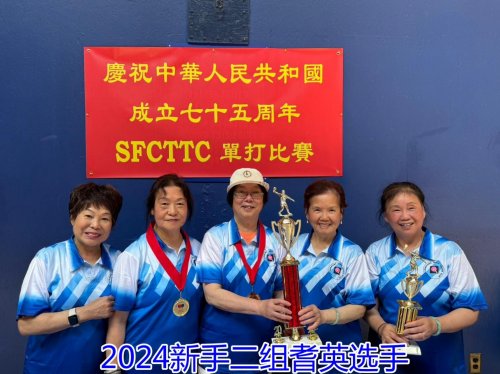
1987年至1997年担任讲师期间,韦恪仪始终保持着对新知识的渴求。他密切关注计算机领域的前沿动态,参阅最新出版的专业书籍,结合教学实践潜心编写BASIC语言彩色立体图象程序。在课堂上,他将复杂的编程原理转化为生动易懂的案例,用幽默风趣的语言点燃学生的学习热情;课后,他耐心解答每一个疑问,甚至为基础薄弱的学生额外辅导。他的认真负责与生动教学,不仅赢得了学生的爱戴,更获得了校方的高度认可。1989年,韦教练凭借卓越的教学能力与学术素养,成功斩获三籓市市立大学计算机系终身讲师执照,这在当时的华人教师中极为罕见。
During his tenure as a lecturer from 1987 to 1997, Lewis Wei always maintained a thirst for new knowledge. He closely followed the cutting-edge developments in the computer field, referred to newly published professional books, and devoutly compiled BASIC language color 3D image programs combined with teaching practice. In class, he transformed complex programming principles into vivid and understandable cases, igniting students' enthusiasm for learning with humorous language; after class, he patiently answered every question and even provided extra tutoring for students with weak foundations. His dedication and vivid teaching not only won the love of students but also gained high recognition from the school. In 1989, Lewis Wei successfully obtained a tenured lecturer license from the Department of Computer Science at California State University due to his outstanding teaching ability and academic qualifications, which was extremely rare among Chinese teachers at that time.

在深耕教学的同时,韦恪仪并未停止探索的脚步。1990年,他创办了自己的计算机公司,业务涵盖计算机销售、维修及技工人才培养。从课堂到市场,他将理论与实践紧密结合,既为社会输送了大量专业人才,也让自己的计算机事业蒸蒸日上。但无论事业如何发展,他心中始终牵挂着乒乓,牵挂着在异国他乡打拼的同胞。
While deeply engaged in teaching, Lewis Wei did not stop exploring. In 1990, he founded his own computer company, covering computer sales, maintenance, and technical talent training. From the classroom to the market, he closely integrated theory with practice, not only transporting a large number of professional talents to society but also making his computer career thrive. However, no matter how his career developed, he always cared about table tennis and his compatriots striving in a foreign land.
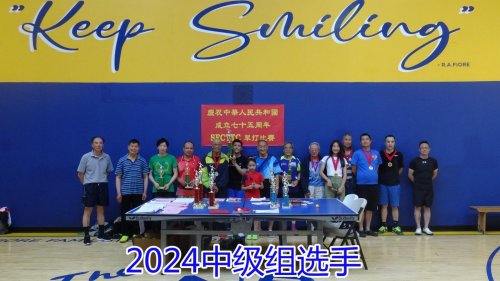
初心永不改:乒乓为桥,大爱无疆
Original Aspiration Unchanged: Table Tennis as a Bridge, Boundless Love
“旧金山中国城有很多人爱打乒乓球,却没有一个正式的组织,大家像散沙一样各自为战。”韦教练在业余时间走访康乐中心与儿童游乐场时,敏锐地发现了华人移民的精神需求。身为乒乓人,他深知这项运动的凝聚力;身为移民,他更懂同胞在异国他乡的孤独。“不如成立一个乒乓球会,既能让大家交流球技,又能帮助新移民融入社区,这不是一举两得吗?”2002年,在韦教练的奔走与筹备下,旧金山中国城乒乓球会(SFCTTC)正式诞生,这个小小的球会从此成为华人移民的精神家园。
"There are many people in San Francisco's Chinatown who love playing table tennis, but there is no formal organization—everyone fights alone like scattered sand." When visiting community centers and children's playgrounds in his spare time, Coach Wei keenly detected the spiritual needs of Chinese immigrants. As a table tennis enthusiast, he deeply understood the cohesive power of this sport; as an immigrant himself, he better understood the loneliness of compatriots in a foreign land. "Why not establish a table tennis club? It can not only allow everyone to exchange skills but also help new immigrants integrate into the community—isn't this killing two birds with one stone?" In 2002, through Coach Wei's efforts and preparations, the San Francisco Chinatown Table Tennis Club (SFCTTC) was officially founded. This small club has since become a spiritual home for Chinese immigrants.
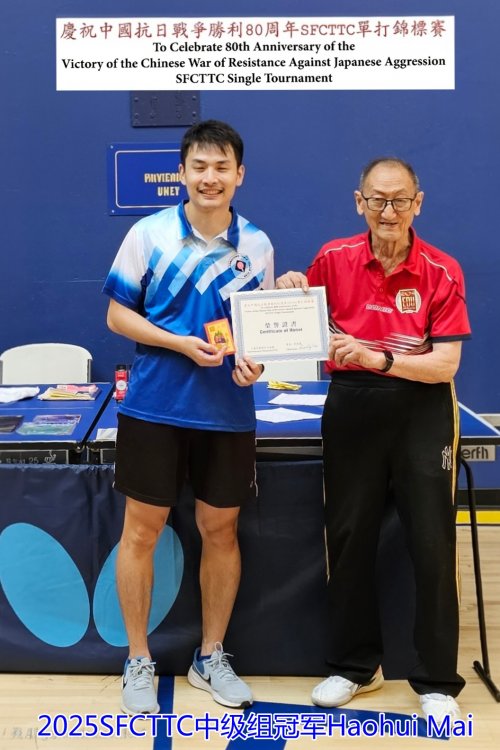
为了让教学更具针对性,韦教练耗费重金购置了全套专业装备:王励勤、刘国正同款进攻型球拍搭配狂飙海绵反胶粒胶皮,适配不同打法的长胶+反胶直拍与生胶+反胶横拍。“无论是横拍还是直拍,无论是快攻还是削球,我都能拿出对应的装备示范,让学员看得明白、学得扎实。”他常常这样说。在训练方法上,他总结出两套简便有效的发球辅助训练法:“打纸洞”要求学员用正反手发球姿势,将球精准打入一公尺外直径50毫米的纸洞,锤炼发球的精准度;“刹停高球”则训练学员用水平球拍在胸前接住1.5公尺高处落下的乒乓球且不使其弹跳,提升控球稳定性。
To make teaching more targeted, Coach Wei spent a lot of money purchasing a full set of professional equipment: offensive paddles used by Wang Liqin and Liu Guozheng, matched with Hurricane sponge inverted rubber; penhold paddles with long rubber + inverted rubber and shakehand paddles with short rubber + inverted rubber, suitable for different playing styles. "Whether it's shakehand or penhold grip, fast attack or chopping, I can take out the corresponding equipment to demonstrate, so that students can understand clearly and learn solidly," he often said. In terms of training methods, he summed up two simple and effective serving auxiliary training methods: "Hitting the Paper Hole" requires students to use forehand and backhand serving postures to accurately hit the ball into a 50mm-diameter paper hole one meter away, tempering serving precision; "Stopping High Balls" trains students to catch table tennis balls falling from 1.5 meters high with a horizontal paddle in front of their chest without bouncing, improving ball control stability.
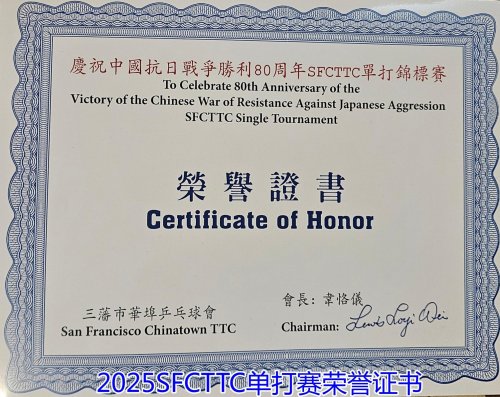
韦教练的执教理念深深植根于徐寅生的乒乓思想,并融入了自己的实践感悟。他常对学员说:“赢球的关键在于‘快、稳、准、狠’的辩证统一。”他解释道,“快”是基础,打球慢吞吞只会被动挨打;但一味求快易失准,这时“稳”便要发挥作用,避免无谓失误。而“准”与“狠”更是缺一不可:“准”是方向,要精准找到对手空挡;“狠”是力度,在关键时刻敢于发力发难,比如侧身正手偷袭、接下旋球时突然快拉,这些都是“狠”的体现。他尤其强调发球环节的“狠”与“变”:“如果发不出旋转差异大的球,即便落点再好、假动作再逼真,也难以迷惑对手。”
Coach Wei's coaching philosophy is deeply rooted in Xu Yinsheng's table tennis ideas and integrated with his own practical insights. He often tells his students: "The key to winning lies in the dialectical unity of 'fast, stable, accurate, and fierce'." He explains that "fast" is the foundation—playing slowly will only lead to passive beating; but blind pursuit of speed can easily lead to inaccuracy, and at this time, "stable" should play a role to avoid unnecessary mistakes. Moreover, "accurate" and "fierce" are indispensable: "accurate" is the direction, requiring precise identification of the opponent's gaps; "fierce" is the strength, daring to exert force at critical moments, such as side forehand sneak attacks and sudden fast loops when receiving underspin balls—these are all manifestations of "fierce". He especially emphasizes "fierce" and "flexible" in serving: "If you can't serve balls with large spin differences, even if the placement is good and the fake actions are realistic, it's difficult to confuse the opponent."
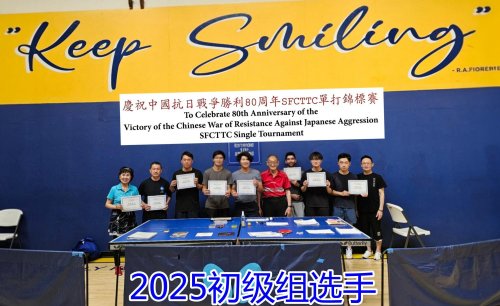
创新传万里:敢于打破常规,新型球技遍四方
Innovation Spreads Far and Wide: Daring to Break Conventions, Popularizing New Sports Skills Across All Regions
经过多年钻研,韦教练总结出一套系统的发球技法,涵盖11个发球方向 (斜线指向对手正手手肘的发球方向最为优先)、9种旋转类型,4个长短球的区域和7种假动作发球。
1.他的反手右侧上下旋球堪称经典:高举右肘形成30度夹角,待球下落至网高时挥拍上下摆动,下摆碰球为下旋,上摆碰球为上旋,动作隐蔽。
2.韦教练的反手强烈正下旋球更是极具杀伤力:击球时前拇指松开、四指紧握球拍精准击中球的底部。为了增加球拍对球的压力从而加强磨擦力,此时手腕和前臂务必快速向前上方移动,把球上推到己方球台。此时发出的球一旦碰到对手垂直于球台的球拍后,球必定以22.5度角正前方急剧下坠。
3. 韦教练急速上下摆动前臂而让球拍碰撞球的下端发出的反手上下旋球更能使得对手摸不着头脑来球的旋转方向,对手往往要到接球时,球快速落在球拍旁或球远离球台后才惊觉旋转差异,从而接发球累累失误。
4. 反手网角左侧上下旋球:发出的球又短又刁,让对手挫手不及还球,不是下网,就是太高,便于己方击杀。
5. 正手上下旋和正右旋球:两脚站在球台中间偏右,双手移向右角发球;发球时球拍飞快地向球的下方铲去,然后翻转手腕分别让球拍靠近球的右侧中部和球的上端。这种发球方向及球的旋转性能多变,对手实在难以接球。
6. 反手正右旋球,兼右上下旋球:对手若用传统式抽拉或下旋搓球回击,还球就会下网或过高。
7. 反手斜线推挡,兼正上下旋球:这种发球是专门对付那些善用下旋搓球还球的对手。当他们还球过高时,便可击杀。
After years of research, Coach Wei has summarized a systematic set of serving techniques, covering 11 serving directions(The serve direction diagonally toward the opponent’s forehand elbow is the top priority),9 types of spins,4 zones of long and short balls and 7 deceptive serves.
1.His backhand right-side topspin and backspin are classics: raise the right elbow to form a 30-degree angle, swing the racket up and down when the ball falls to the net height. Hitting the ball on the downward swing produces backspin, while hitting on the upward swing generates topspin, with a concealed movement.
2.Coach Wei’s backhand powerful pure backspin is even more destructive: when hitting the ball, release the thumb and grip the racket firmly with the other four fingers to accurately strike the bottom of the ball. To increase the pressure of the racket on the ball and enhance friction, the wrist and forearm must move quickly forward and upward to push the ball onto one’s own table. once the served ball touches the opponent’s racket perpendicular to the table, it will definitely drop sharply straight ahead at a 22.5-degree angle.
3. The backhand topspin and backspin served by Coach Wei by swinging his forearm rapidly up and down to hit the lower part of the ball make it difficult for the opponent to judge the spin direction. Opponents often don’t realize the difference in spin until they attempt to receive the ball—either the ball speeds past the racket or moves away from the table—leading to frequent receiving errors.
4. Backhand left-corner topspin and backspin: the served ball is short and tricky, catching the opponent off guard. The return is either into the net or too high, facilitating a winning shot for one’s own side.
5. Forehand topspin, backspin, and right-side spin: stand slightly to the right of the center of the table with both feet, and move both hands to the right corner to serve. After quickly scraping the bottom of the ball with the racket, flip the wrist to make the racket approach the middle right and the top of the ball respectively. This serve features variable directions and spins, making it extremely difficult for the opponent to return.
6. Backhand right-side spin combined with right-side topspin and backspin: if the opponent responds with traditional looping or backspin chopping, the return will either go into the net or be too high.
7. Backhand diagonal block combined with pure topspin and backspin: this serve is specifically designed to counter opponents who excel at returning with backspin chopping. When their return is too high, a winning shot can be executed immediately.
俗话说,“兵不厌诈”。在乒乓比赛中,假动作发球是一种非常有效的战术。韦教练由衷地希望人人都能熟练掌握假动作发球,通过观察对手的站位和接发球技术上的优缺点选择不同种类的假动作发球,为己方赢得优势。
As the saying goes, "All is fair in war." In table tennis matches, deceptive serves are a highly effective tactic. Coach Wei sincerely hopes that everyone can master deceptive serves proficiently, and select different types of deceptive serves by observing the opponent’s stance and the strengths and weaknesses of their receiving techniques to gain an advantage for their own side.

2007年《乒乓世界》首次提出“反旋转”概念。当时中国多数球友使用直拍和正手发左旋球,有些人却用正手执拍发右旋球,跟左旋相比,“右旋”成为“反旋转”。韦教练认为,使用正手发右旋球远远不如用反手发右旋球优越。使用反手发球既能充分发挥手臂、手腕和腰腹的肌肉协调性,又可灵活选择多条发球方向及发球性能。他最后呼吁中国乒坛各级教练员和运动员千万不要“墨守成规”,尽快大力学用和宣传“反手假动作发球”,以使我国乒乓球水平更上一层楼。中美关系若有缓和,欢迎国内乒坛人士组团来美旅游,兼到三藩市乒乓球俱乐部(SFTTC)找他练习反手假动作发球,他可以发邀请信。
In 2007, <Table Tennis World> first proposed the concept of "reverse spin." At that time, most table tennis players in China used penhold grips and served left-side spin with their forehands, while some used forehands to serve right-side spin. Compared with left-side spin, "right-side spin" became known as "reverse spin." Coach Wei believes that serving right-side spin with the forehand is far inferior to using the backhand. Using the backhand to serve not only fully exerts the muscle coordination of the arms, wrists, waist, and abdomen but also allows flexible selection of multiple serving directions and performance. He finally appeals to coaches and athletes at all levels in China’s table tennis circle to avoid "sticking to outdated conventions," and to quickly learn, apply, and promote "backhand deceptive serves" to elevate China’s table tennis level to new heights. If China-US relations ease, domestic table tennis figures are welcome to form groups to travel to the United States and visit the San Francisco Table Tennis Club (SFTTC) to practice backhand deceptive serves with him—He can issue invitation letters.
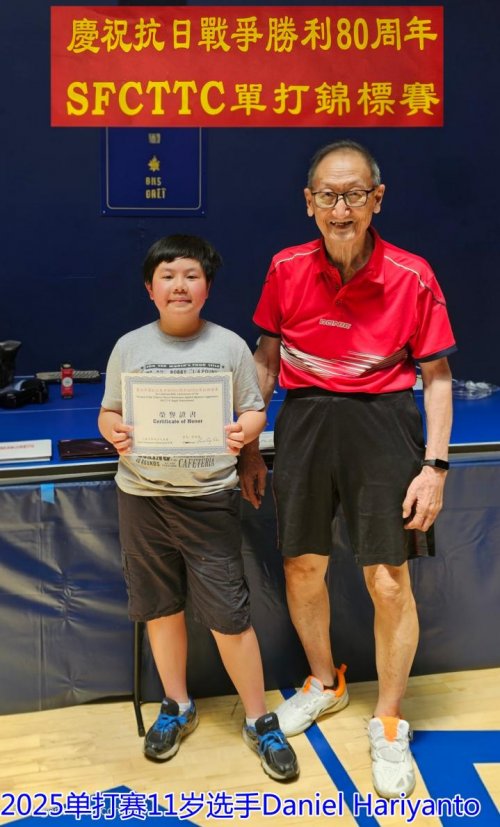
为了传承国球精神,共谱乒乓球运动发展新篇,韦教练积极组织和指导本球会(SFCTTC)参加比赛而获奖无数,还凭着他的独特而实用的乒乓理论和发球技术去国内正定国家乒乓球训练基地和石家庄六通乒乓球专业俱乐部传播发球要领。
In order to carry forward the spirit of China’s national sport and to jointly compose a new chapter in the development of table tennis, Coach Wei has actively organized and guided his club (SFCTTC)to participate in numerous competitions, winning countless awards. Moreover, with his distinctive and practical theories of table tennis and serving techniques, he has shared the essentials of serving at the Zhengding National Table Tennis Training base and the Liutong Professional Table Tennis Club in Shijiazhuang."

除了技术传授,韦教练更用行动诠释着乒乓运动的温度。多年来,他坚持在康乐中心与儿童游乐场担任义工教练,免费为低收入社群的老幼教授乒乓球,用银球点亮他们的生活。2021年5月,韦教练从全职工作岗位退休,但这并非休息的开始,而是奉献的新起点。他每周4次前往救世军KROC中心义务教球,风雨无阻;2022年KROC关门,此时SFTTC重新开放,他又以SFTTC经理身份操持社区乒乓活动与学习班,让更多人爱上这项运动。
Beyond technical instruction, Coach Wei interprets the warmth of table tennis through his actions. For many years, he has volunteered as a coach at community centers and children’s playgrounds, offering free table tennis lessons to the elderly and children from low-income communities, illuminating their lives with the silver ball. In May 2021, Coach Wei retired from his full-time job, but this was not the start of rest, but a new beginning of dedication. He volunteered to teach table tennis at the Salvation Army KROC Center four times a week, rain or shine; when KROC closed in 2022, SFTTC reopened, and he took on the role of SFTTC manager to organize community table tennis activities and training classes, allowing more people to fall in love with the sport.
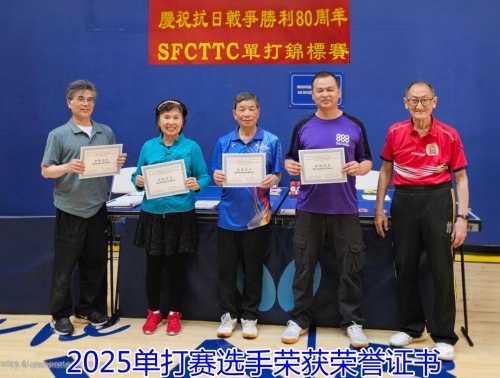
大爱传千里:慈善为怀,薪火相传
Boundless Love Spreads Far: Charity-Minded, Torch Passed On
“取之社会,用于社会”是韦教练一生的坚守。在发展事业与推广乒乓的同时,他始终心系公益,用点滴善举温暖着世界。2023年以来,他先后向美国多家医院、学校及慈善机构捐献4000美元;以三藩市华人互助会顾问身份,为中国救灾致残少年王兴亮、北京顺义区光爱学校残障孤儿及美国南加州火灾贫民捐赠3000美元。这些数字背后,是他对同胞的深情、对生命的敬畏。 "
Take from society, give back to society" is Coach Wei's lifelong commitment. While developing his career and promoting table tennis, he has always cared about public welfare, warming the world with small acts of kindness. Since 2023, he has donated a total of $4000 to various hospitals, schools, and charitable organizations in the United States; in his capacity as a consultant to the San Francisco Newcomers Association, he has donated $3000 to Wang Xingliang, a teenager disabled in disaster relief in China, disabled orphans at the Guang'ai School in Shunyi District, Beijing, and victims of wildfires in Southern California. Behind these figures lies his deep affection for compatriots and reverence for life.
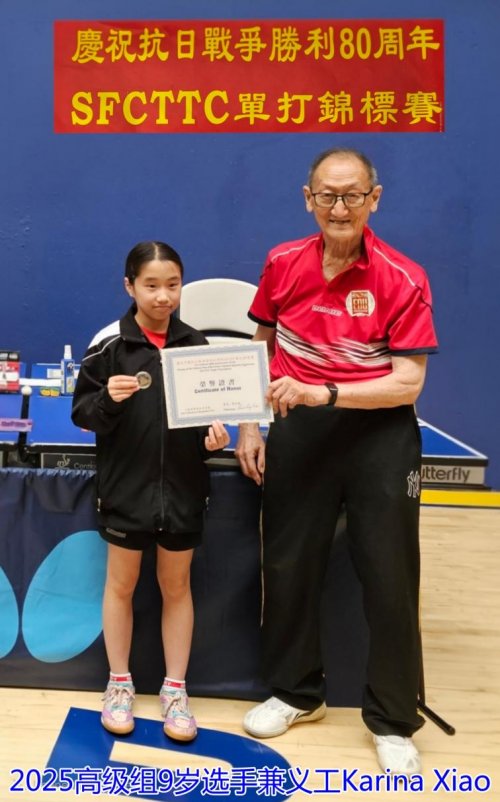
2024年与2025年,为庆祝中华人民共和国成立75周年和中国抗日战争胜利80周年,韦教练牵头组织旧金山中国城乒乓球会,在三藩市俱乐部(953 De Haro St., S.F., CA 94107)先后举办10场“国庆杯”“抗战胜利杯”单打比赛。从赛事筹备、场地布置到裁判安排,他事必躬亲;为了让更多人参与,他自掏腰包为参赛者与观众提供乒乓球用品优惠;赛后,他拿出3000美元购置奖金、荣誉证书与奖章,亲手颁发给每一位获奖者、捐款人与义工。“以球会友,以赛传情,让大家在运动中铭记历史、感恩当下。”这是他举办赛事的初心。
In 2024 and 2025, to celebrate the 75th anniversary of the founding of the People's Republic of China and the 80th anniversary of the victory of the Chinese People's War of Resistance Against Japanese Aggression, Coach Wei took the lead in organizing the San Francisco Chinatown Table Tennis Club to host 10 "National Day Cup" and "Victory in the War of Resistance Cup" singles competitions at the San Francisco Table Tennis
Club (953 De Haro St., S.F., CA 94107). He personally oversaw everything from event preparation, venue decoration to referee arrangements; to encourage more participation, he used his own money to provide discounts on table tennis equipment for participants and spectators; after the competitions, he spent $3000 to purchase prizes, certificates of merit, and medals, presenting them personally to every winner, donor, and volunteer. "Make friends through table tennis, convey affection through competitions, and let everyone remember history and cherish the present through sports"—this is his original aspiration for organizing the events.
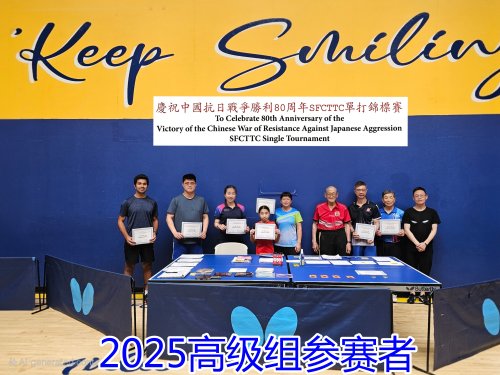
如今,89岁的韦教练依然活跃在球台前。岁月在他脸上刻下了皱纹,却未曾磨灭他眼中的光芒。当被问及为何如此执着时,他笑着说:“退休不是终点,是新起点。能教大家打球,能为社区做些事,我就觉得满足、快乐。”在他的影响下,旧金山中国城乒乓球会不断壮大,越来越多的华人移民通过乒乓球找到了归属感,不少学员更接过了义工教练的接力棒,将这份爱与温暖传递下去。
Today, at 89 years old, Coach Wei is still active at the table tennis table. Years have carved wrinkles on his face, but they have not dimmed the light in his eyes. When asked why he is so persistent, he smiles and says: "Retirement is not an end, but a new beginning. Being able to teach everyone to play and do something for the community makes me feel satisfied and happy." Under his influence, the San Francisco Chinatown Table Tennis Club has continued to grow. More and more Chinese immigrants have found a sense of belonging through table tennis, and many students have taken over the baton of volunteer coaches, passing on this love and warmth.

从南开大学的优等生到中科院的科研人员,从乒乓教练到计算机名师,从义工教练到慈善达人,韦恪仪的一生跨越了时代与领域的界限。而贯穿始终的,是“实事求是”的人生态度,是“德智体全面发展”的自我要求,更是“取之社会,用于社会”的赤子情怀。银球旋转间,映照的是他不变的初心;岁月流转中,沉淀的是他永恒的传奇。
From a top student at Nankai University to a researcher at the Chinese Academy of Sciences, from a table tennis coach to a computer expert, from a volunteer coach to a charity activist, Lewis Loyi Wei's life has crossed the boundaries of eras and fields. Running through it all is his life attitude of "seeking truth from facts," his self-demand of "all-round development of morality, intelligence, and physical fitness," and his pure feelings of "taking from society and giving back to society." As the silver ball spins, it reflects his unchanging original aspiration; as time flows, it precipitates his eternal legend.

备注:
SFTTC是一家乒乓球馆,拥有5张优质的蝴蝶牌Centrefold 25球台(新球台单价为2100美元),配备良好的地板与照明设施。球馆位于美国加利福尼亚州旧金山市德哈罗街953号(953 De Haro St., S.F., CA 94107)。SFTTC由经理韦恪仪(Lewis Loyi Wei)运营,他同时担任拥有98名会员的旧金山中国城乒乓球会(SFCTTC)主席。
SFTTC每周一、周五晚6点至10点,周六下午1点至5点向公众开放,无需预约。球友可在此自由练球、参与循环赛,或选修单人及小组乒乓课程。
球馆入场费标准如下:周一入场费为10美元现金;周五,周六每日入场费$15,连续两个周末入场,费用为25美元;学员仅需支付5美元,即可在上课前后与其他球友练球。周一开放时段由崔晓华教练(Coach Alice Cui)与司徒教练(Coach Henry Situ)负责运营。周五,周六学员将由拥有49年执教经验的美国乒协地区级教练韦恪仪(Lewis Loyi Wei)亲自指导,训练方式为一对一多球训练。无私人训练课时,韦教练将在SFTTC提供免费集体辅导。
韦教练联系方式:电话415-307-9381,电子邮箱gearycrs@hotmail.com,
邮寄地址 685 Geary St.Apt.606, San Francisco,CA 94102,USA。
Remarks:
SFTTC is a table tennis gym featuring 5 high-quality Butterfly Centrefold 25 tables (each new table is priced at $2,100) with excellent flooring and lighting. It is located at 953 De Haro St., San Francisco, CA 94107, USA. SFTTC is operated by Manager Lewis Loyi Wei, who also serves as the Chairman of the San Francisco Chinatown Table Tennis Club (SFCTTC) with 98 members.
SFTTC is open to the public without appointment on Monday and Friday evenings from 6pm to 10pm, and Saturday afternoons from 1pm to 5pm. Players can engage in open play, round-robin tournaments, or enroll in individual and group training courses.
Entrance Fees for the gym (Cash Only): Monday entrance fee: $10, Friday and Saturday daily entrance fee: $15, Entrance fee for two consecutive weekends: $25. Students pay only $5 to practice with other players before and after classes.
The Monday session is operated by Coach Alice Cui and Coach Henry Situ. On Fridays and Saturdays, students receive one-on-one multi-ball training from Lewis Loyi Wei, a regional coach with 49 years of experience certified by the USA Table Tennis Association. When there are no private training sessions; Coach Wei will provide free group coaching at SFTTC.
Contact Coach Wei: Phone 415-307-9381, Email gearycrs@hotmail.com, Mailing address: 685 Geary St. Apt. 606, San Francisco, CA 94102, USA.


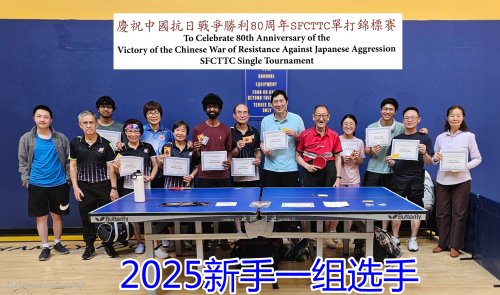



 |
 |
 |
 |
 |
 |
 |
 |
| 被感动 | 同情 | 囧囧 | 愤怒 | 和谐 | 悲剧 | 高兴 | 打酱油 |
